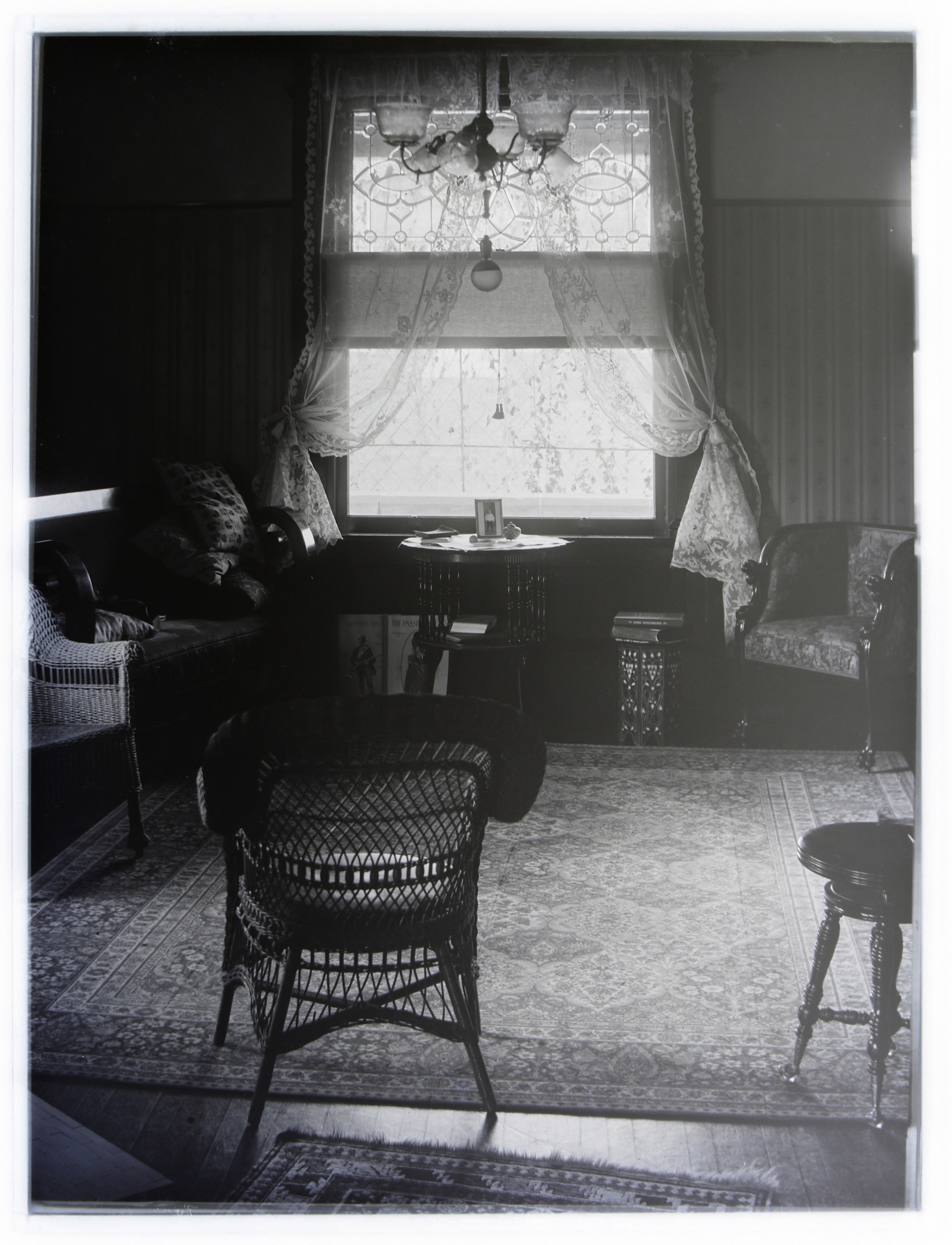
Machine-made lace was not only incomparatively cheaper than hand-made lace (allowing large segments of the population to acquire it), but also easier and faster to produce on a scale rarely seen before. New usages were adopted, like the one seen on this glass plate negative by the pictorialist photographer Clarence H. White. In this typical American bourgeois interior at the turn of the 20th century, lace curtains take center stage. The transparency of the fabric allows light to penetrate the dark interior while the lace grid evokes the geometric, bevelled glass of the window and the floral motifs play against the outside vegetation. From a commodity reserved for the financial elite, be it secular or religious, by the 20th century, lace had become synonymous with bourgeois and working classes interiors.
Untitled (interior, Weiant house), 1904
Glass plate negative, 21.5 x 16.3 cm.
From Princeton University Art Museum, Gift of Sally Weiant Boyd. x1992-170b.
